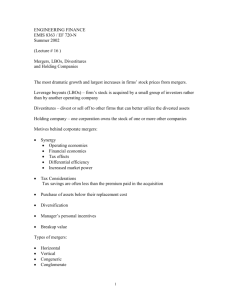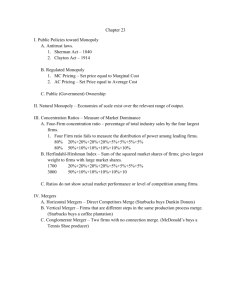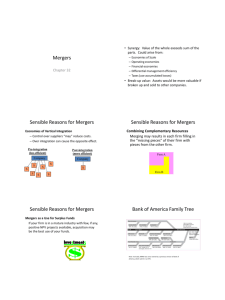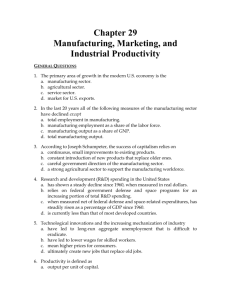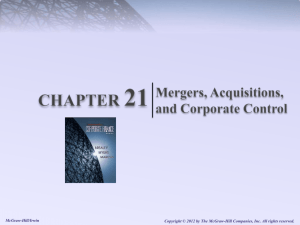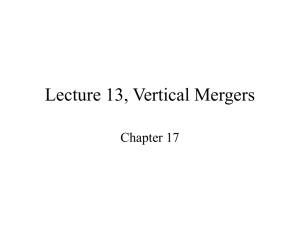1. One method of allocating resources is to the use the market place
advertisement
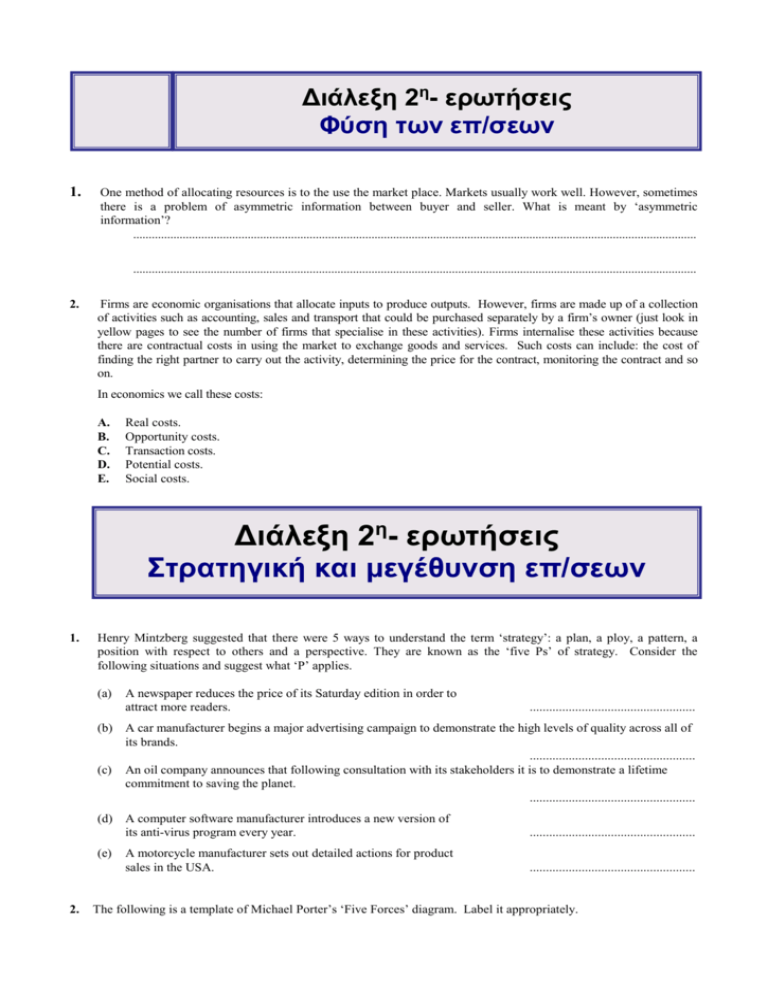
Διάλεξη 2η- ερωτήσεις Φύση των επ/σεων 1. One method of allocating resources is to the use the market place. Markets usually work well. However, sometimes there is a problem of asymmetric information between buyer and seller. What is meant by ‘asymmetric information’? ...................................................................................................................................................................................... ...................................................................................................................................................................................... 2. Firms are economic organisations that allocate inputs to produce outputs. However, firms are made up of a collection of activities such as accounting, sales and transport that could be purchased separately by a firm’s owner (just look in yellow pages to see the number of firms that specialise in these activities). Firms internalise these activities because there are contractual costs in using the market to exchange goods and services. Such costs can include: the cost of finding the right partner to carry out the activity, determining the price for the contract, monitoring the contract and so on. In economics we call these costs: A. B. C. D. E. Real costs. Opportunity costs. Transaction costs. Potential costs. Social costs. Διάλεξη 2η- ερωτήσεις Στρατηγική και μεγέθυνση επ/σεων 1. Henry Mintzberg suggested that there were 5 ways to understand the term ‘strategy’: a plan, a ploy, a pattern, a position with respect to others and a perspective. They are known as the ‘five Ps’ of strategy. Consider the following situations and suggest what ‘P’ applies. (a) A newspaper reduces the price of its Saturday edition in order to attract more readers. ................................................... (b) A car manufacturer begins a major advertising campaign to demonstrate the high levels of quality across all of its brands. ................................................... (c) An oil company announces that following consultation with its stakeholders it is to demonstrate a lifetime commitment to saving the planet. ................................................... (d) A computer software manufacturer introduces a new version of its anti-virus program every year. (e) 2. A motorcycle manufacturer sets out detailed actions for product sales in the USA. ................................................... ................................................... The following is a template of Michael Porter’s ‘Five Forces’ diagram. Label it appropriately. 3. The Five Forces Model provides a useful framework for analysing strategic issues within a competitive industry environment. However, it also subject to criticism. Provide three weaknesses of the Five Forces Model. (i) .................................................................................................................................................................................... (ii) ................................................................................................................................................................................... (iii) .................................................................................................................................................................................. 4. 5. Core competencies are those skills, knowledge and technologies that underpin the organisation’s competitive advantage. Two attributes of a core competence is that they are non-substitutable for any other resource and they are rare because competitors do not possess them. Name two other attributes that make up a firm’s core competences. (i) ............................................................................................................................................................................... (ii) ............................................................................................................................................................................... A firm can grow by merging with or taking over another firm. (We will use the term ‘mergers’ for both mergers and takeovers.) Mergers can be of three types: (i) horizontal (ii) vertical (iii) conglomerate Match each of the three types of merger to the following examples. 6. (a) A soft drinks manufacturer merges with a pharmaceutical company. ............................................... (i) / (ii) / (iii) (b) A car manufacturer merges with a car distribution company. ........................................................... (i) / (ii) / (iii) (c) A large supermarket chain takes over a number of independent grocers. ......................................... (i) / (ii) / (iii) Various motives have been suggested for mergers other than the simple desire to grow. Name four of them. 2 (i) (ii) (iii) (iv) 8. Which ONE of the following is a disadvantage to the firm from vertical integration? A. Exploitation of economies of scale. B. Reduced uncertainty C. Enhanced ability to respond to changing market demand, with secure supply sources. D. Increased barriers to entry. E. Reduced transport costs. The following figure shows a relationship between market power (measured by market shares) and economies of scale for horizontal mergers. Competition authorities might use such a tool in assessing whether a potential merger would bring benefits to an economy. For example: Quadrant A would indicate a situation in which merged firms would achieve substantial economies of scale but have low market shares. Quadrant B would indicate mergers leading to high market shares among the merged firms and substantial economies of scale. Quadrant C would show mergers that achieved few economies of scale but market shares are low. Finally, quadrant D would indicate few economies of scale but high market shares. MARKET SHARES LOW HIGH SUBSTANTIAL ECONOMIES OF SCALE 7. ............................................................................................................................................................................... ............................................................................................................................................................................... ............................................................................................................................................................................... ............................................................................................................................................................................... A B C D X Y FEW (a) A potential merger between two firms suggests an outcome of X, leading to very high market shares and substantial economies of scale. If you were a business economist in a competition authority would you advise that the merger go ahead? Explain why? (b) What advice would you give if a potential merger led to a point such as Y? (c) What advice would you give for mergers that led to outcomes in quadrants A and C? 3

